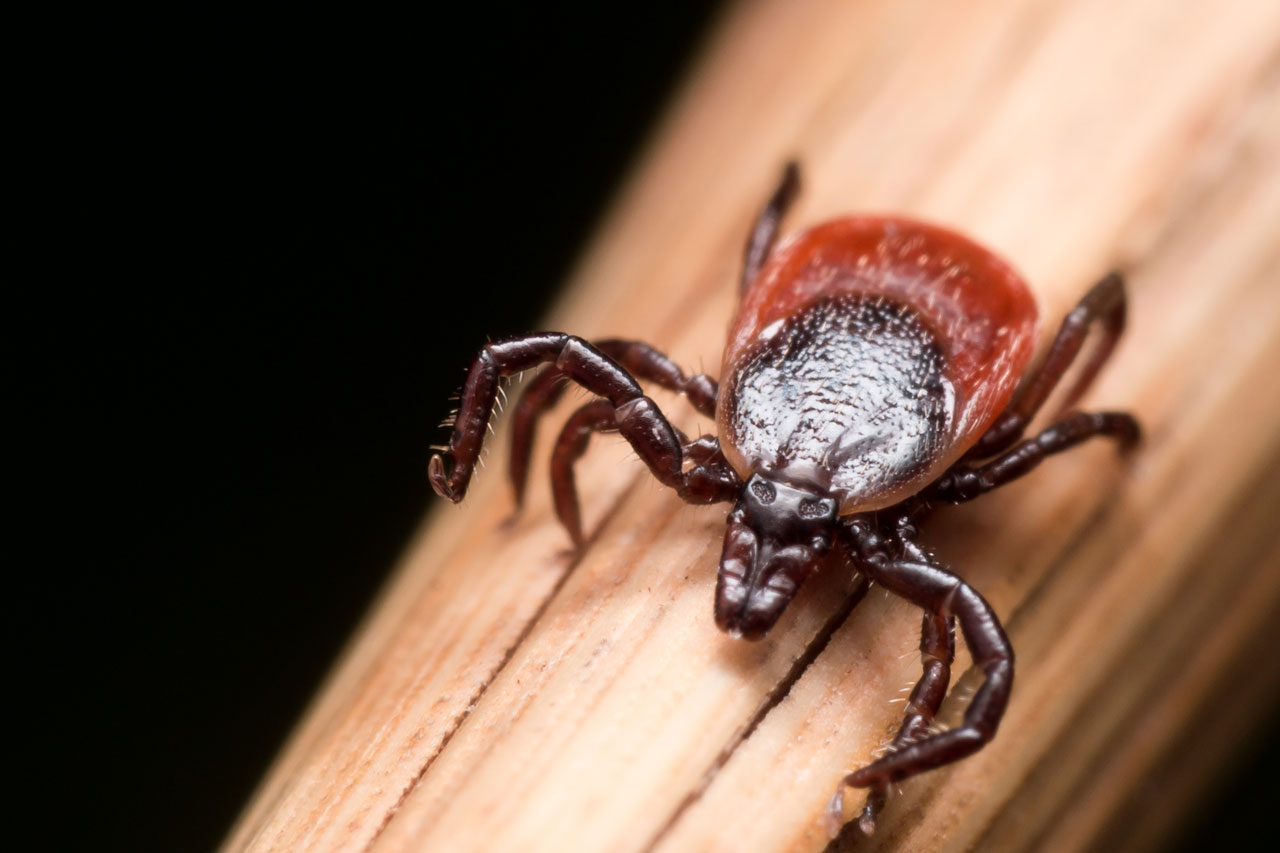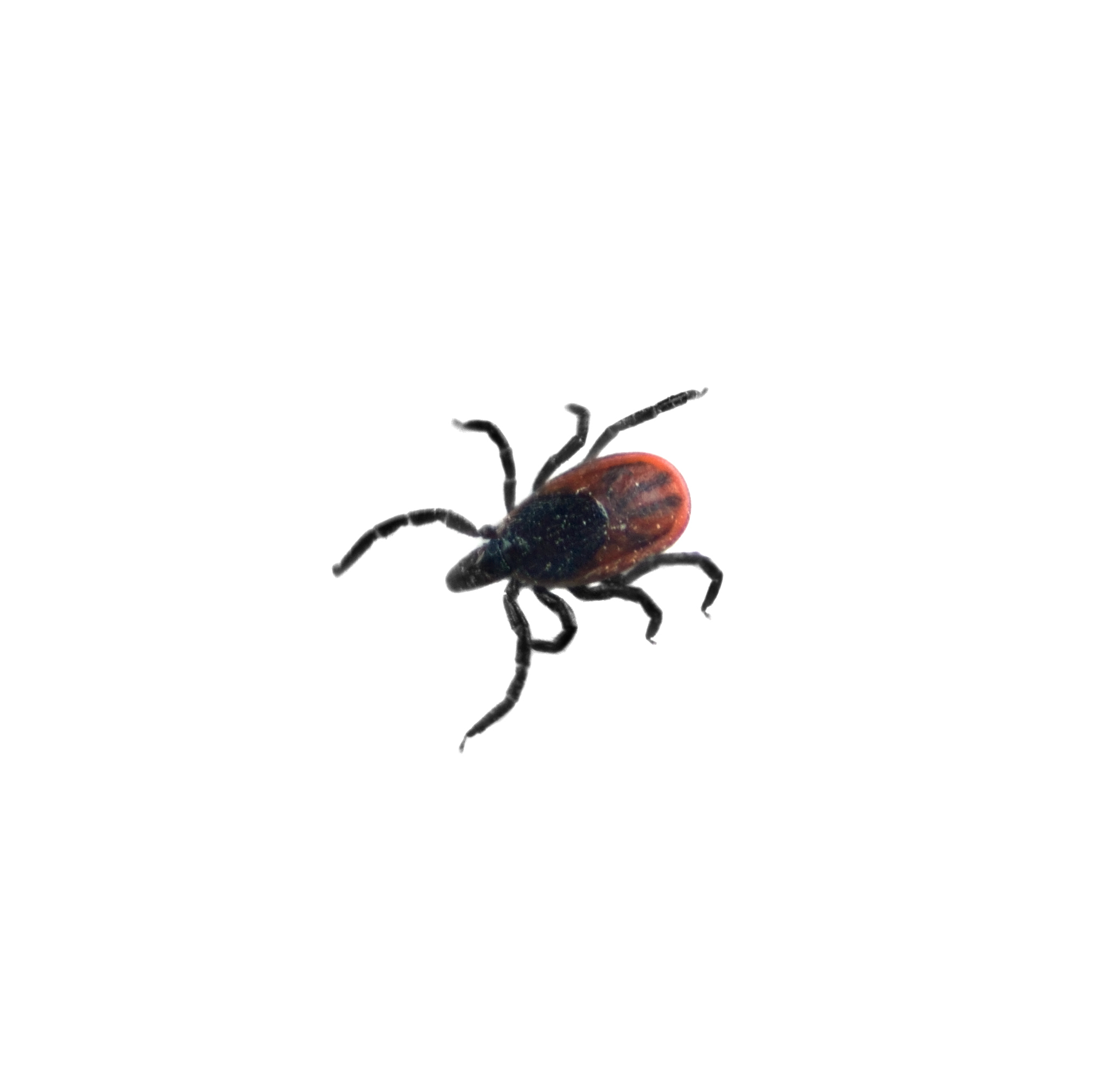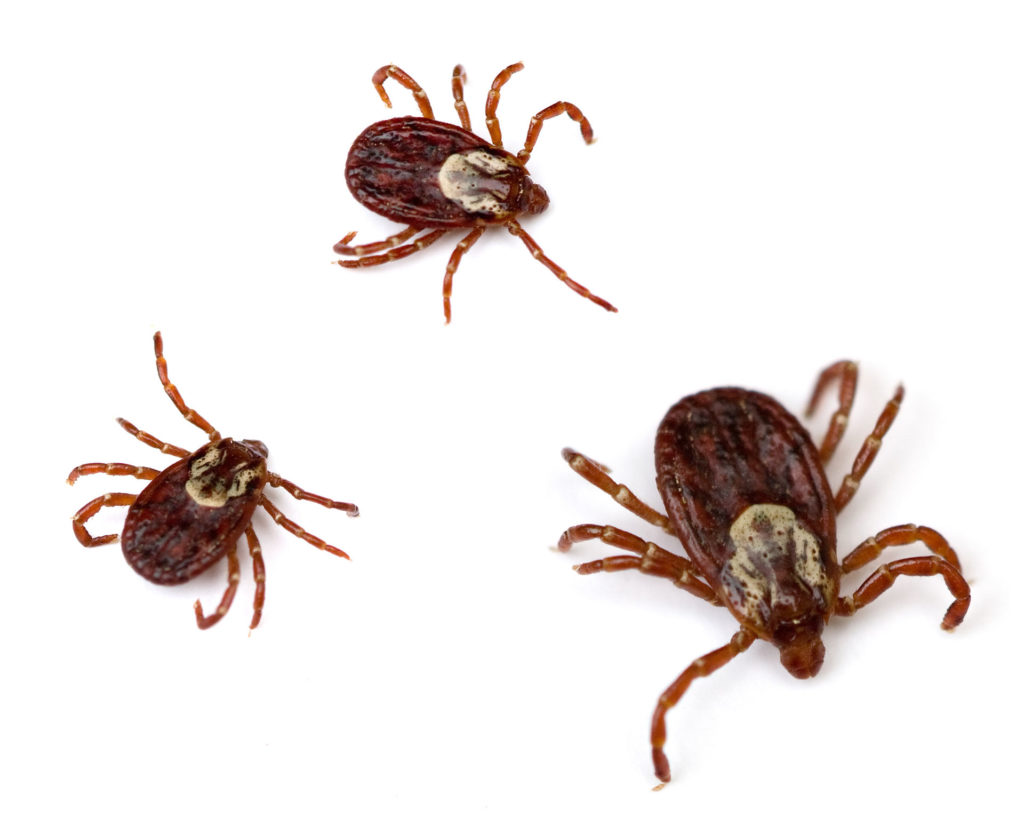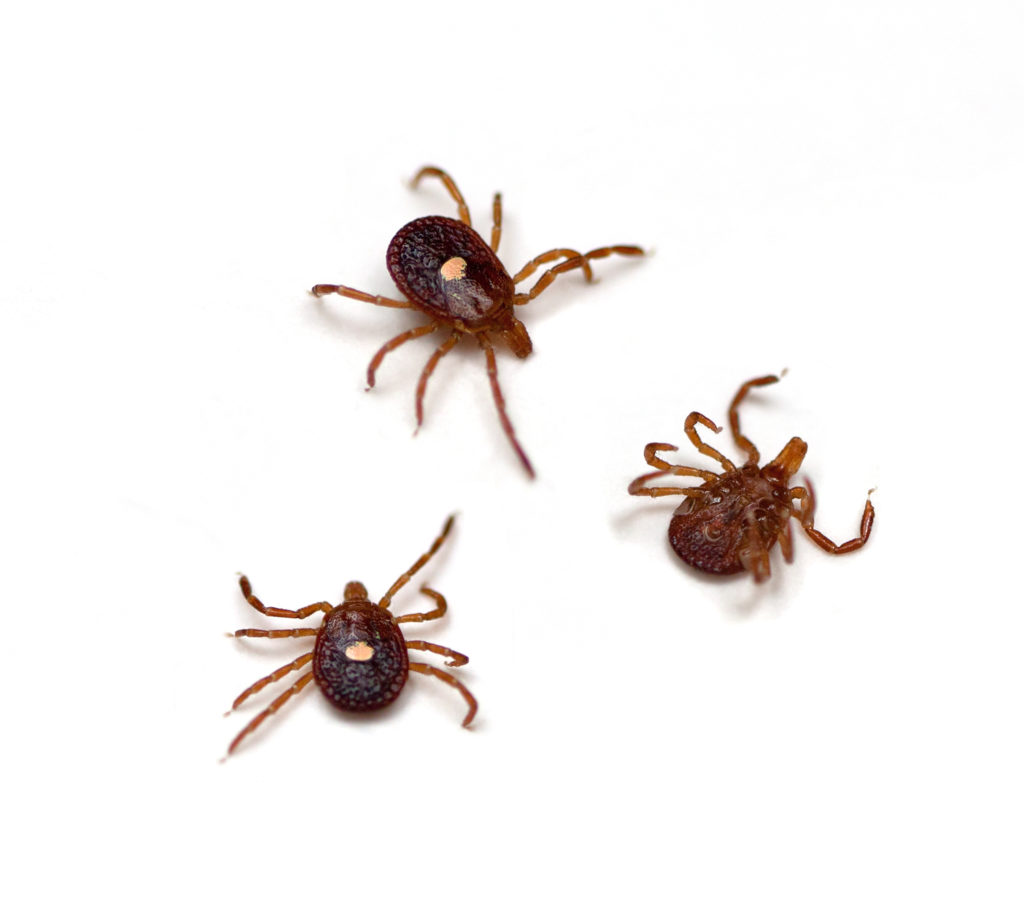There Are How Many Types of Ticks in Maine?

Deer Tick or Black-Legged Tick

The Deer Tick is distinguishable by the reddish brown coloration on the back of the insect. This tick is most known for carrying Lyme disease and given its namesake, people believe it is most commonly found on deer. While deer ticks can carry lyme disease, they can also be carriers for other diseases that like the Powassan virus and others that are equally concerning. Deer do carry deer ticks, but the common white-footed mouse is one of the most infamous carriers of deer ticks. Our organic based product does a wonderful job controlling deer ticks. Studies have shown that the product that we use is on par with synthetic pesticides as far as efficacy, reducing the population by up to 90%!
Our organic based product does a wonderful job controlling deer ticks. Studies have shown that the product that we use is on par with synthetic pesticides as far as efficacy, reducing the population by up to 90%!
We target the different life cycles of the Deer Tick from the time that the temperatures consistently reach 40 degrees during the day in the spring until the temperatures consistently drop to below 40 degrees in the fall. We target Deer Tick adults from early spring into the fall. In the spring we also target the nymphs that overwintered, as well as tick nests that can hold thousands of eggs. A tick nest is usually found in leaf litter and it is extremely important to treat areas with leaf litter by spraying our products throughout the litter. By using application methods that turn up the leaf litter, we more effectively exterminate ticks at this life stage. . After deer ticks hatch into the larval stage and find a blood meal, usually on a small rodent, then they molt into nymphs. It is during that part of the life cycle that they most commonly pick up the tick-borne diseases that concern to us. Tick nymphs are literally the size of the tip of a pencil! Once larvae molt into nymphs, they then find another meal as nymphs typically in a small animal such as a fox or domestic dogs and cats. The adult ticks prefer deer as their main host. As humans we are susceptible to tick bites at ALL of these stages!
American Dog Tick or Wood Tick
The American Dog Tick comes out in full force in the spring and is very active into June. This tick is dark brown with an offwhite patch on the top of its back.
Many times we get calls about the tick in numbers that years ago would have been considered unfathomable. I had a customer prior to our applications remove 75 ticks from their dog after a 5-minute hike! Because of their size and sheer numbers dog ticks are harder to control, but it can be done! The biggest issues come with customers that have fields and meadows close to living spaces, so keeping the fields around your house mowed is very important. The good news is that there has yet to be any confirmed cases of Maine based Rocky Mountain Spotted Fever, the predominant tick-borne illness that the American Dog tick can transmit. Currently they are considered a nuisance pest with no immediate concern for public health.

Lone Star Tick

The Lone Star tick has been identified in Maine on several occasions, but there isn’t currently a breeding and established population. Adult females are brown to reddish brown and have a light colored spot in the middle of their backs. Males typically are brown to reddish brown without the spot on their backs.
The Lone Star tick range is moving North and it is believed in the near future that it will be a concern for Maine citizens. They are problematic for several reasons. They are extremely hardy and will actually stalk a host and swarm! We will have more on this as it becomes relevant.
The Woodchuck Tick
Woodchuck ticks are tan to reddish tan in color an approximately the size of a sesame seed as adults. These ticks are most commonly found around woodchuck dens and on woodchucks themselves, but can also travel on other similar sized animals like racoons, skunks, porcupines and others. Although generally considered a nuisance, the Woodchuck Tick does carry the Powassan Virus which can be deadly to humans. There have been several known cases of Powassan here in Midcoast Maine. If you have a woodchuck on your property, I suggest you have it removed. The Woodchuck Tick is very susceptible to environmental conditions which certainly helps in out battle against them. For more information about the Woodchuck tick, visit the University of Maine extension website.
How to Kill and Repel Ticks
A consistent spray application program for killing and repelling ticks is critical in the fight to protect your family and your pets. Greener Grounds Tick Control uses natural products made from organic materials to safely and effectively reduce the tick population on your property! We’ll consult with you about how to best treat your property and what landscaping and other adjustments can be made in addition to spraying to further reduce populations.
For more information on the different types of tick in Maine visit the University of Maine Cooperative Extensions website by clicking here.
Please email any questions to evan@greenertickcontrol.com or call 207-390-5628
